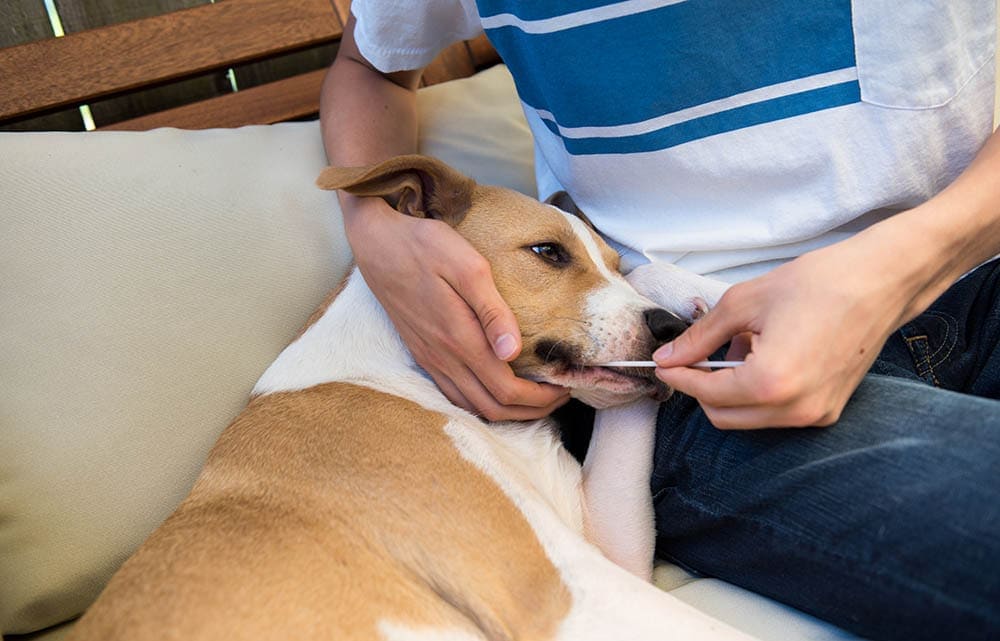5 Foods High in Vitamin E For Dogs: Vet-Approved Options
By Cheryl Regan
Updated on
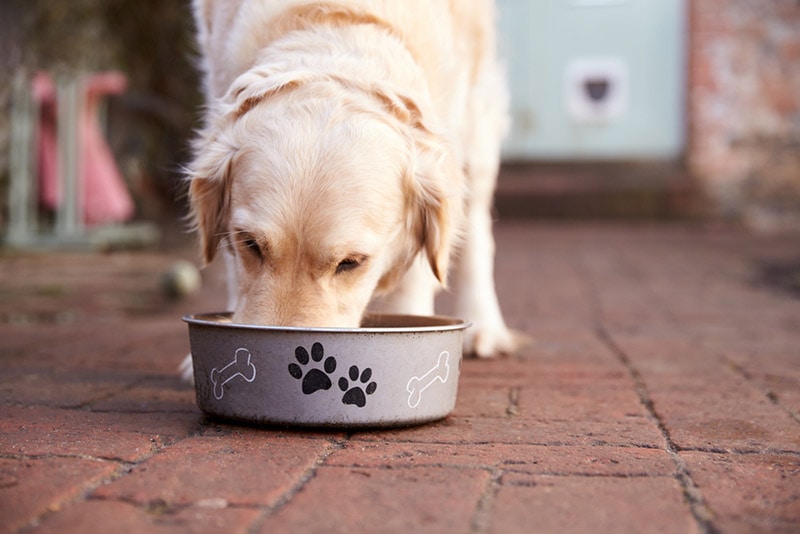
Click to Skip Ahead
The right dose of vitamin E will boost and supplement your dog’s immune system and promote healthy muscles, heart, liver, skin, and coat. Vitamin E is also a powerful antioxidant that helps to neutralize free radicals, molecules responsible for cell damage that can have harmful effects on health. Your dog’s body won’t make vitamin E by itself, so it’s important to make sure they’re being fed the right amount through a healthy, balanced diet.
Most dog foods contain vitamin-rich ingredients including sufficient amounts of vitamin E. However, if you want to supplement your dog’s diet with another source of vitamin E, there are lots of delicious options to choose from. Although rare, both lack and excess of vitamin E can occur, so make sure you use the supplements in moderation or according to your vet’s advice. We’ve made a list of the top 5 canine-friendly foods high in vitamin E.
The 5 Foods High in Vitamin E For Dogs
1. Safflower Oil

- Vitamin E per 3.5 oz (100g): 46 mg
While technically more of an ingredient than a food, safflower oil has an exceptionally high vitamin E content. Not only that, but this oil is also a great source of vitamin K and omega-6 fatty acids, mainly gamma-linolenic acid.
Safflower oil blends have been approved by the FDA as an additive to dog food, but there is a strict limit that should not be exceeded. The maximum safflower oil blend that you can add to complete adult dry maintenance dog food is 0.3 percent per kilogram. It can be all too easy to give your pooch an excess of safflower oil that is very likely to give them an upset stomach, but the occasional few drops over their food should be fine. That said, the amount can differ depending on different breeds and sizes and the amount already present in their diet. It’s always best to consult your vet, as you don’t want to overdo it and give your pooch an achy belly. Safflower oil is very fatty and not especially nutritious by itself.
2. Sunflower Seeds

- Vitamin E per 3.5 oz (100g): 19.6 mg
Raw or toasted shelled, unsalted, natural sunflower seeds make for a nutritious and vitamin E-packed snack for your dog. Aside from its vitamin E benefits, just one quarter cup of shelled sunflower seeds contains 5.5 grams of protein, too—although you won’t need to give your dog that much.
Sunflower seeds also contain vitamins B1, B6, and B3 and beneficial minerals including selenium, copper, and manganese. Sunflower seeds should be an occasional snack offered only in moderate amounts. Small dogs can have 10 to 20 seeds per week, while large dogs should have no more than 20 to 40 seeds. Speak to your vet first before adding sunflower seeds to your dog’s diet.
3. Peanut butter

- Vitamin E per 3.5 oz (100g): 5.41 mg
Most dogs find peanut butter incredibly tasty, and the good news is that it also happens to contain a high amount of vitamin E when compared to other foods. Peanut butter shouldn’t be given to overweight dogs or dogs at risk of obesity as it’s high in calories and contains some saturated fats. If your pup is healthy, then this option can make an occasional irresistible and nutritious treat, offered in moderation.
Before giving your dog peanut butter, check the ingredients to make sure it doesn’t contain xylitol—this artificial sweetener can cause a life-threatening condition! If possible, opt for unsalted peanut butter, or better yet, dog-specific peanut butter.
4. Trout
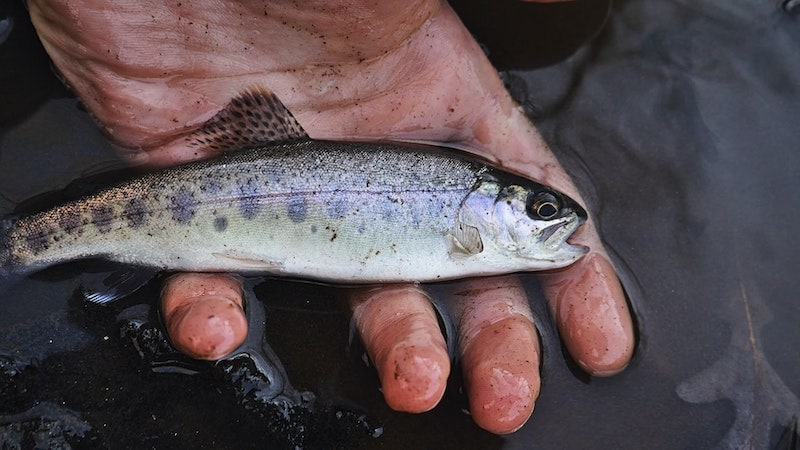
- Vitamin E per 3.5 oz (100g): 2.15 mg
High in protein, omega-3 fatty acids, vitamin B12 and vitamin E, well cooked trout can be a regular part of your dog’s healthy and balanced diet. Raw fish can harbor harmful parasites and bacteria that can make your dog very sick, so always make sure you cook trout thoroughly before giving it to your dog.
As long as you remove the skin and scales, head, tail and bones, and avoid adding additional fat and seasoning during cooking, your canine friend will thank you for this tasty and nutritious occasional treat!
5. Salmon
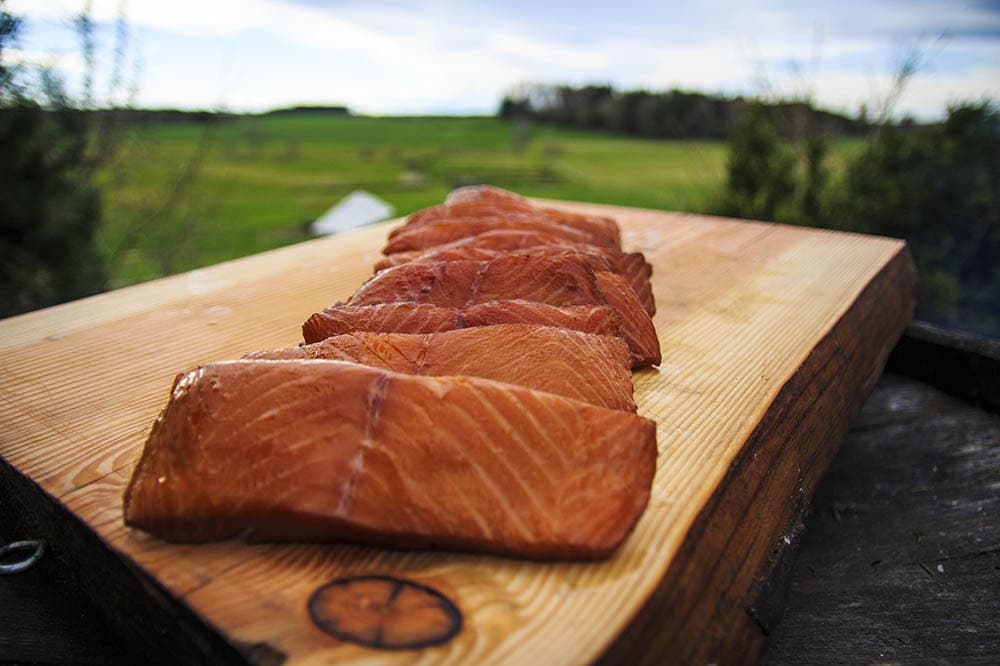
- Vitamin E per 3.5 oz (100g): 1.1 mg
Not only does salmon contain high quantities of vitamins and minerals, including vitamins B12 and E, but it’s also a great source of protein and omega-3 fatty acids, which boost your dog’s immune system and promote a healthy, shiny coat.
Make sure the salmon you feed your dog is cooked and prepared without any seasoning or extra ingredients, and never raw. Raw salmon often contains bacteria and parasites that can lead to a serious, sometimes life threatening illness in your pooch. Salmon does contain tiny bones, so make sure you remove them before cooking. Offer salmon in moderation and not every day as it may lead to an upset stomach in some dogs.
How Much Vitamin E Should My Dog Have?
Your dog’s daily requirement of vitamin E will vary depending on their age, breed, stage of growth and development, and individual size. According to the Association of American Feed Control Officials (AAFCO), the minimum recommended amount of vitamin E is 50 IU (international units) per kilogram (2.2 lb) of food. Keep in mind that this is the bare minimum for healthy growth and development, and the typical amount of vitamin E in the food can go up to 500 IU/kg. However, dogs will safely tolerate much higher amounts in their food, even as high as 1000-2000 IU/kg of food.
Most quality dog foods should already contain your dog’s daily vitamin E requirement, but if you prepare your dog’s food at home or you are concerned that your dog may have a vitamin E deficiency, speak to your vet. Look for professional resources or a veterinary nutritionist to help you formulate a complete and balanced homemade diet that caters to your dog’s needs. Both your vet and nutritional expert will advise you on the appropriate food and nutrients tailored to your dog’s individual needs.
The nutritious, vitamin E-rich treats discussed in this article can all be used as an occasional tasty snack for your dog, but they should not be the only or main source of this vitamin for your dog. These snacks can’t replace a complete, balanced diet and do not contain enough vitamin E to meet your dog’s daily requirements. However, they can provide an infrequent delicious addition to your dog’s usual food.
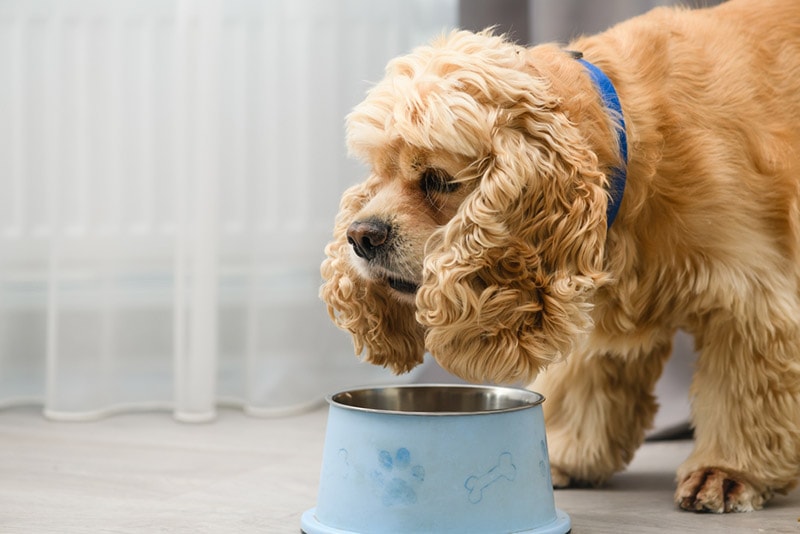
The 5 Symptoms of Vitamin E Deficiency in Dogs
Vitamin E deficiency in dogs is rare, especially if they’re eating store-bought vitamin-enriched dog food, but it’s not unheard of. Dogs that are on a specialized or homemade diet may be more at risk of vitamin E deficiency.
- Muscle weakness
- Skin problems
- Weight loss
- Decreased vision
- Decreased fertility
The above is not an exhaustive list of the possible signs of vitamin E deficiency in dogs, but if you believe something isn’t right, it’s best to consult a vet. Likewise, the above signs could be caused by another underlying health condition.
Conclusion
If you feed your dog a complete and balanced commercial diet that meets the AAFCO requirements, they should already be consuming the minimum amount of vitamin E required by a healthy dog. That said, if you’d like to supplement your dog’s diet with healthy, natural snacks that are rich in vitamin E, then there are plenty of options—including occasional peanut butter, salmon, trout, and even a few drops of safflower oil! However, always consult with your vet first before introducing new ingredients to your dog’s food. Remember to do so in moderation and only occasionally, rather than on a daily or regular basis, as they could cause more harm than good.
If you suspect a vitamin deficiency, speak to your vet so they can rule out other underlying health conditions and advise you on the best diet for your dog.
Featured Image Credit: Monkey Business Images, Shutterstock




